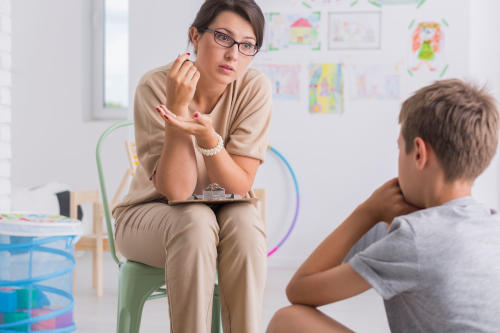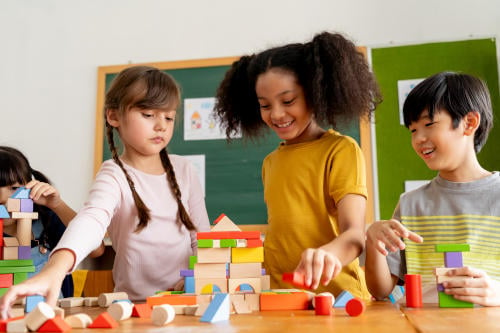Safety is at the core of life. It is a parent’s role to safeguard their children and a teacher’s role to safeguard their students in school. (From hereon, the word “school” will be used to include all educational venues responsible for a young person’s learning.)
The word trauma refers to an overwhelming response to an experience that has caused extreme stress. This could be due to physical or sexual abuse, neglect, the loss of a parent or an accident. Mental health charity “Mind”, explains, “it could be one incident, or an ongoing event that happens over a long period of time.” Ultimately, a trauma can frequently leave a child feeling very unsafe.
SEND tutor and specialist Glynda has educated herself on the topic by reading research extensively. She has found that stress during pregnancy can lead to high levels of cortisol which research states, passes across the placenta and can impair brain development. This may have a negative impact on the area of the brain responsible for executive function and emotional regulation.
Glynda states, “It is important to understand that trauma impairs development of the prefrontal cortex of the brain, and this controls executive function skills.”
Glynda looks particularly at how a traumatic experience can impact a child in school. She adds, “We can do more as teachers. We are natural empaths and fully understand the compassionate, nurturing approach.”
Firstly, how many schoolchildren could be dealing with trauma? Family Support Group, “Not Fine in School”, provides information and support for families that have a child with low attendance. They state, “new research suggests as many as 13 out of 30 students in an average classroom will have toxic stress from three or more traumatic experiences.”
How can schools guide these children to reach their milestones? Children need to know that they will be understood as they find ways to cope.
Glynda explains, “Trauma impacts the brain and cognitive capabilities. It affects the way children think and behave. For example, a child may become hyper-vigilant, looking around them all the time.” Glynda believes that if teachers understand this, they can go further to help such children.
What Does a Trauma-Informed Environment in School Look Like?

Children tormented by their past often require physical and emotional safety via consistent routines, clear expectations and a positive school culture.
Glynda argues that teachers can go the extra mile. “Through understanding that the prefrontal cortex is severely impacted by trauma, and knowing that this is where the executive function skills live, we can address the following areas to make learning more accessible:”
- Planning and organisation
- Self-regulation
- Metacognition (understanding our thought patterns)
- Flexibility and problem solving
- Working memory
“A child with trauma may struggle with all the above. Think of it this way, when such a child is asked to do a task, it could be matched with asking you or I to do a job immediately after an argument with someone or a car accident. At that point we are unable to think properly, self-regulate or organise our thoughts, let alone problem-solve, recall and learn.”
Regarding learning, Glynda states, “A child can be greatly assisted by tools from their teachers, such as graphic organisers. I use an online mind-mapping tool which relieves the pressure on the working memory.”
“If tasks are too pressurised for a child’s cognition, they become overloaded and can’t engage. As teachers we can address this issue.”
Avenues such as learning through art, role-play or imaginative writing can offer potential healing routes.
Glynda adds, “The following techniques can also be highly successful:
- Breaking tasks down into smaller steps
- The use of assistive technology
- Giving children a clear learning objective
- Reflecting on what they have learnt
- The use of visuals and manipulatives, i.e. physical tools in the classroom.”
A Place to Form Relationships

Relationships are at the heart of healing. For traumatised children, establishing trust with adults and peers is crucial. Staff should strive to:
- Create positive connections
- Be consistent and reliable
- Interact with each child, without judgement.
- Set up a support group so children can build positive relationships with peers.
Compassion is powerful. It is fundamental to recognise that a child’s silence, anger or anxiety could be indicative of their trauma rather than a representation of their true self. When educators approach students with empathy, it can make a world of difference.
Teachers can provide a compassionate atmosphere by:
- Incorporating kindness into the foundations of school culture.
- Offering an opportunity for therapy, such as mindfulness.
- Including training for educators to help them understand children with trauma.
“Techniques such as mindfulness present an opportunity for self-talk experiences”, add Glynda. “A child with trauma may find it very hard to control their impulse responses. Mindfulness can really help.”
Children from adverse backgrounds who feel understood in school may be more likely to settle, form bonds and thrive. This can be further enhanced by showing:
- Empathy towards a parent/carer’s challenges regarding their child’s situation.
- Willingness to be potentially navigated by a family’s contributions.
- Readiness to work with outside agencies if necessary.
Finally, A Place That Inserts Humour

Glynda adds, “If a teacher can inject humour into a lesson, it can have such an impact.”
“For example, during an English lesson children could be presented with a sentence: ‘The dog barked at the postman’, and then asked to replace the verb with another option, then the noun, preposition and so on, resulting in a ridiculously silly sentence, such as “The elephant cartwheeled up the ladder!”
The release of dopamine and oxytocin through humour can assist the prefrontal cortex with executive functioning, allowing a calmer learning experience.
As World Mental Health Day occurs on 10th October, London-based charity, “The Mental Health Foundation” declare, “it’s time to prioritise mental health in the workplace.”
With that in mind, it feels like there may be no better time to fully address the needs of children experiencing trauma in school.
Please note: The information provided within this blog, by SENsational Tutors, is for general information purposes only. We appreciate that every person is unique and any advice/experiences mentioned within the content of each blog may not be reflective of your own personal experience. All information on the site is provided in good faith and is for educational informational purposes only. It is not a substitute for professional advice. Before taking any actions based upon such information, we encourage you to consult with appropriate professionals.




